In today’s fast-changing workplace, leadership training and development have become essential drivers of organizational success. From Fortune 500 companies to emerging startups, employers across the U.S. are investing heavily in leadership development programs to strengthen performance, improve retention, and future-proof their workforce against rapid technological change.
This 2024–2025 research compiles the most recent leadership training statistics and it reveals how leadership investment trends have shifted year over year, explores the measurable ROI of leadership training, and highlights how technology, especially AI-powered learning platforms, is transforming how future leaders are developed.
The report also uncovers key demographic and inclusion insights, showing how Gen Z, Millennials, and women in leadership are redefining expectations around learning, coaching, and professional growth. Whether you’re an HR professional, executive, corporate trainer, or business journalist, this data-driven guide offers a clear, evidence-backed overview of where leadership development stands in 2025 and the trends shaping its future.
10 most interesting leadership training and development statistics in the US (2024-2025)
- 71% of U.S. organizations report offering leadership training as part of their career development practices
- 46% of companies increased their training budgets in 2024
- 75% of organizations rate their leadership development programs as “not very effective”
- Only 18% of organizations say their leaders are “very effective” at achieving business goals
- ROI: ~$7 returned for every $1 invested in leadership development
- “Almost 60% of first-time managers … say they received no training when they transitioned into leadership roles”
- Women are 12% less likely than men to receive leadership skills training
- In a 2025 survey, 70% of Gen Z develop skills weekly vs. 59% of Millennials
- 77% of Gen Z and 78% of Millennials prefer video-based content for upskilling
- Corporate training spend in the U.S. fell from US$101.8 billion in 2023 to ~ US$98 billion in 2024 (a ~3.7% drop), even as external content and service spend grew 23%
Statistics on leadership training adoption and programs
71% of U.S. organizations report offering leadership training as part of their career development practices. This highlights a strong emphasis on nurturing internal talent pipelines to meet future leadership needs.
Source: LinkedIn Learning
In a 2024 report, 46% of companies stated their training budgets increased this year, suggesting a growing recognition of learning and development as a strategic investment.
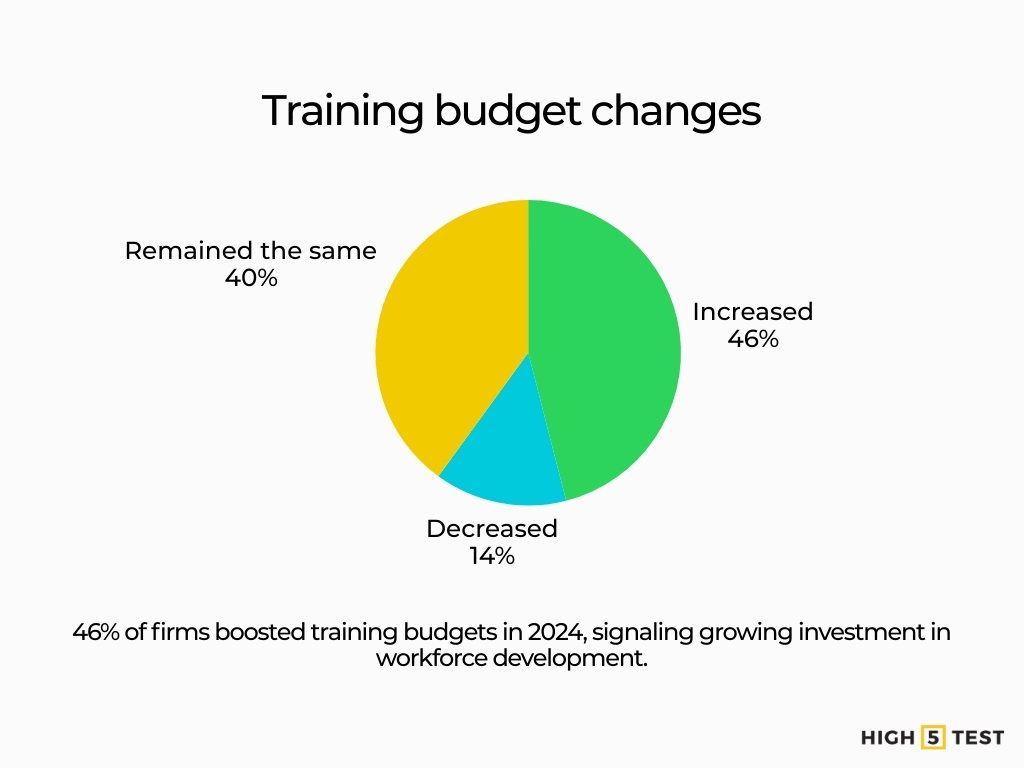
Source: Training Magazine
52.45% of the global corporate leadership training market in 2023 is accounted for by North America, with the U.S. being the largest share. This dominance reflects the region’s continued prioritization of leadership development in business strategy.
Source: Fortune Business Insights
Statistics on manager training gaps
Almost 60% of first-time managers in U.S. companies say they received no training when they transitioned into leadership roles. A lack of preparation can lead to poor team performance and increased turnover.
26% of new managers felt unprepared for their leadership responsibilities after promotion, highlighting the need for structured onboarding and leadership development programs.
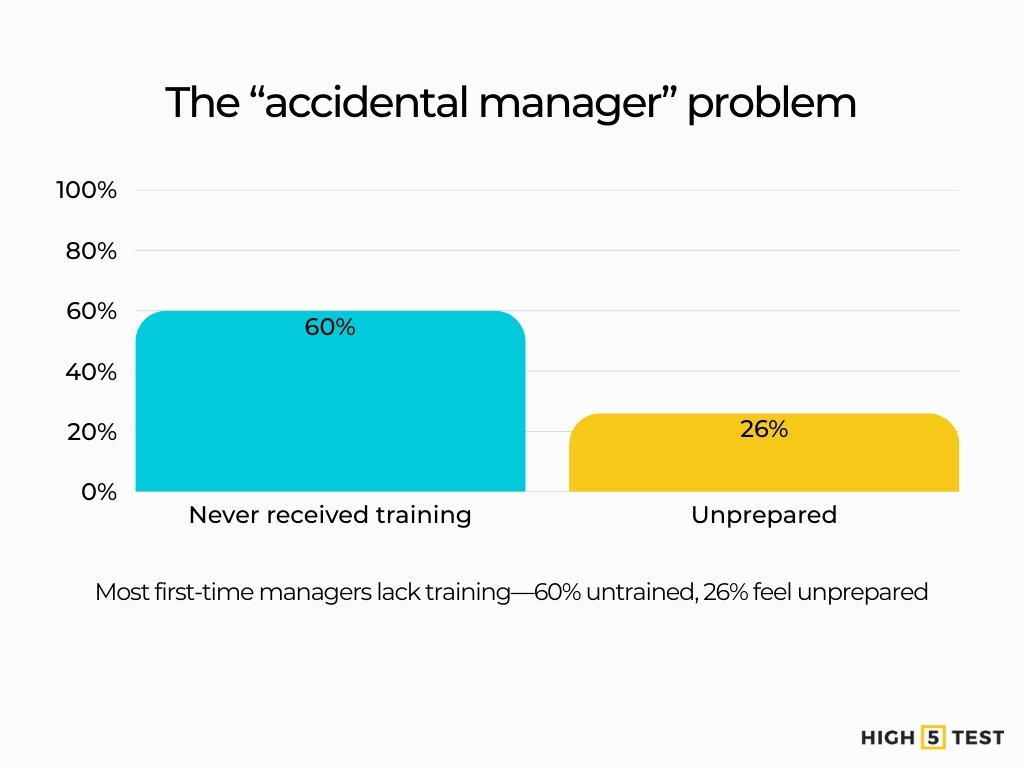
Source: Center for Creative Leadership
In companies with 50 or more employees, 84.4% of employees report they received some formal training at work, but this doesn’t always extend to leadership or management training specifically.
Source: U.S. Bureau of Labor Statistics
Stats on program outcomes and effectiveness
75% of organizations rate their leadership development programs as not very effective. This suggests a significant gap between investment in training and actual leadership outcomes.
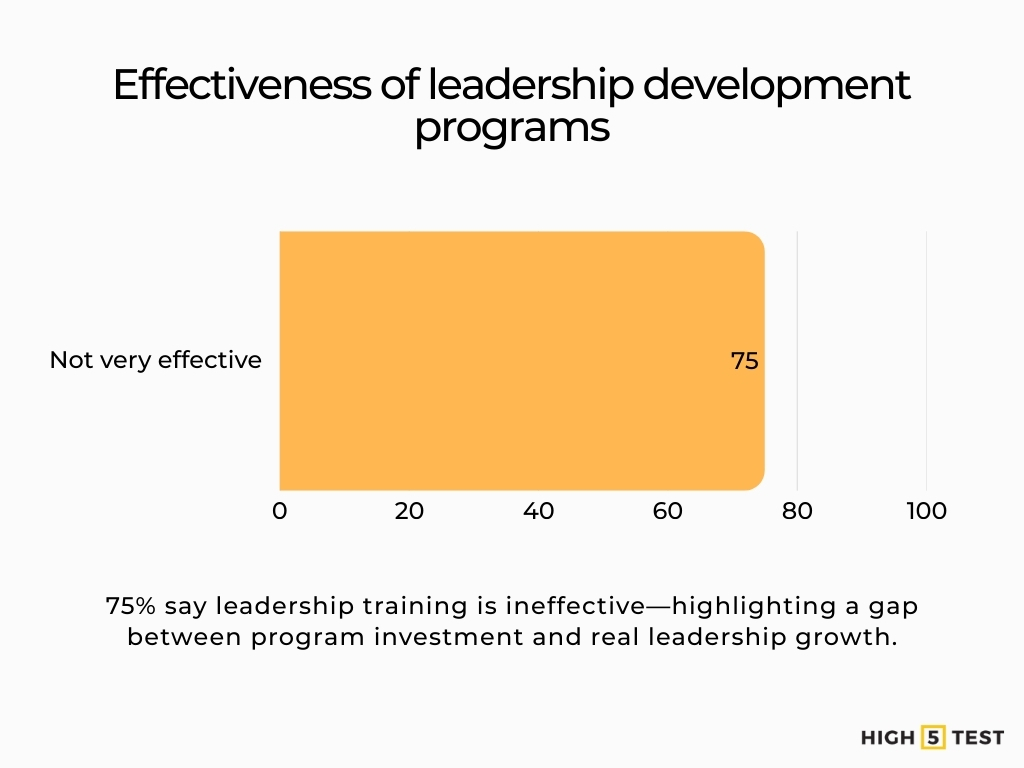
Source: ATD
Only 18% of organizations say their leaders are “very effective” at achieving business goals, highlighting a potential disconnect between leadership capability and strategic execution.
Source: ATD
A mere 19% of organizations believe they are “very effective” at developing leaders across all levels in their firms, indicating a lack of scalable leadership pipelines, especially beyond top-tier roles.
Source: ATD
Organizations report an average turnover rate of 15% and improved retention as a result of their leadership development programs. This suggests that even modest investments in leadership can positively influence employee loyalty and engagement.
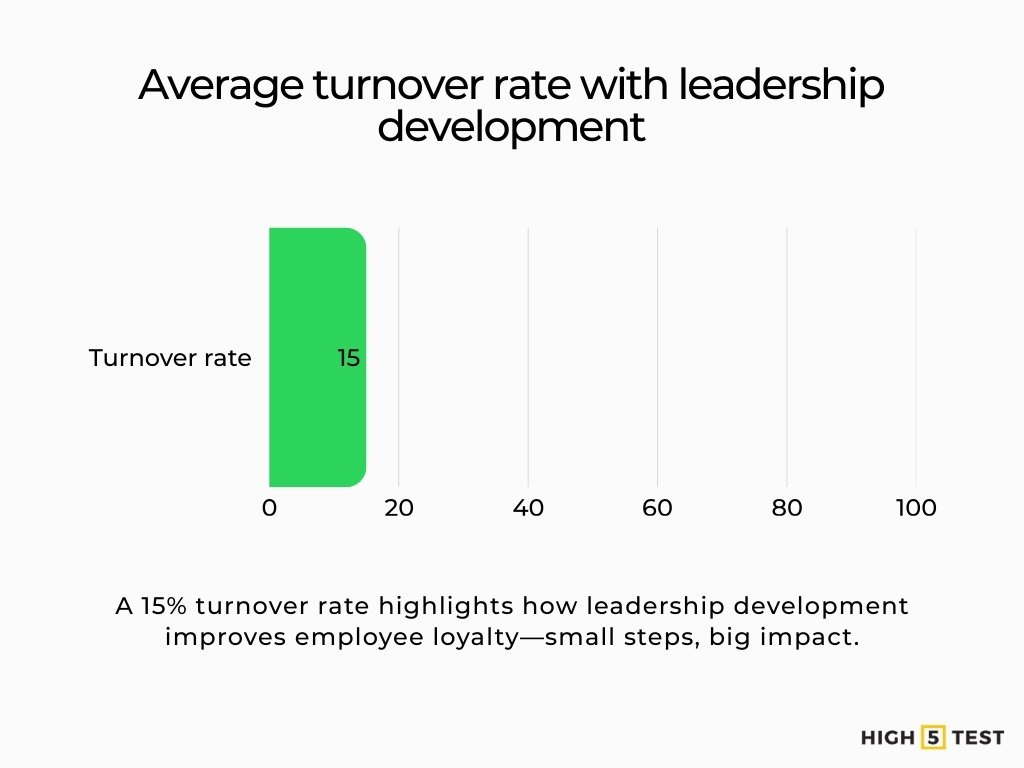
Source: Research Gate
The impact of leadership training on employees and retention
30.3% of employees who quit their jobs in 2024 cited poor company leadership as a key reason, which highlights the growing demand for transparent, supportive, and competent leadership across all levels.
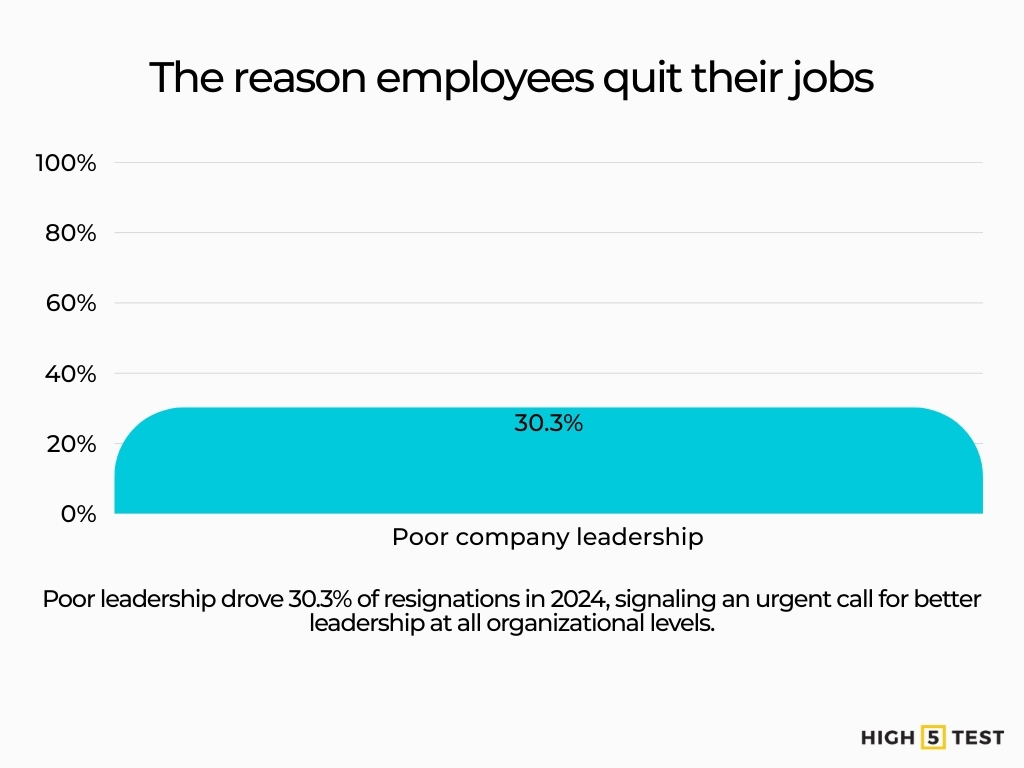
Source: iHire
A survey found nearly seven out of 10 (≈70%) U.S. workers would consider quitting due to a bad manager. This underscores how critical frontline management is to employee retention and workplace morale.
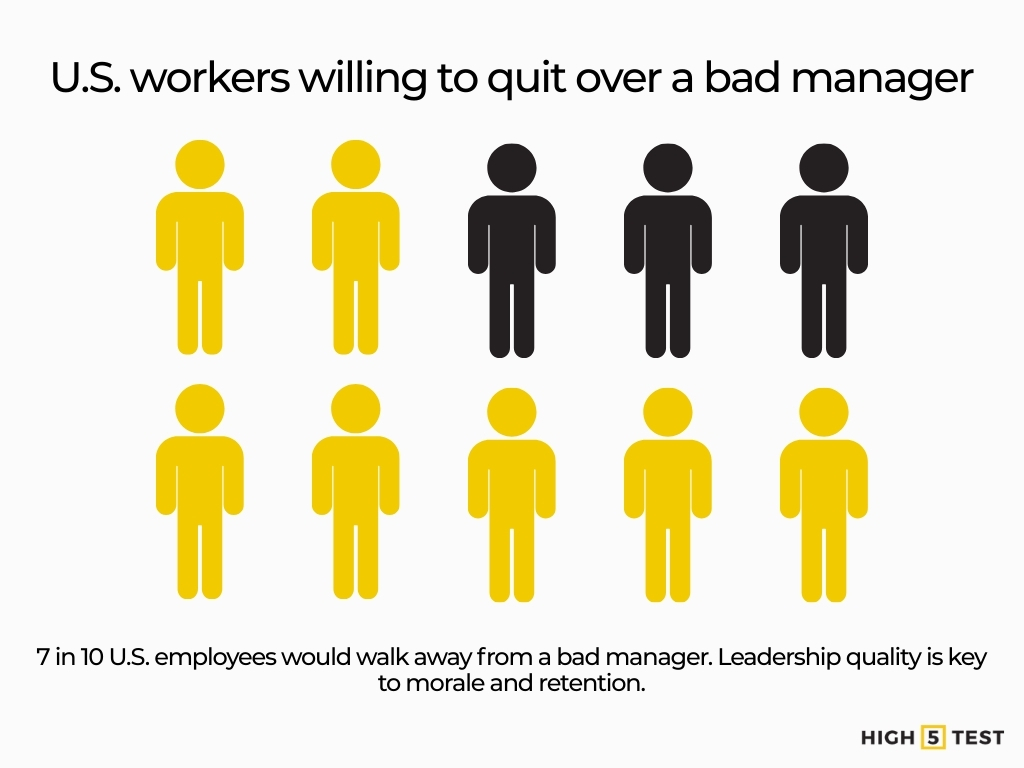
Source: LinkedIn
Global and market trends
A forecast estimates the global corporate leadership training market will grow by USD 31.40 billion from 2025 through 2029, at a CAGR of 11.7%.
Source: Technavio
Data show that demand for AI-related skills in U.S. online job postings increased from about 0.5% in 2010 to 1.7% in 2024, a 240% increase.
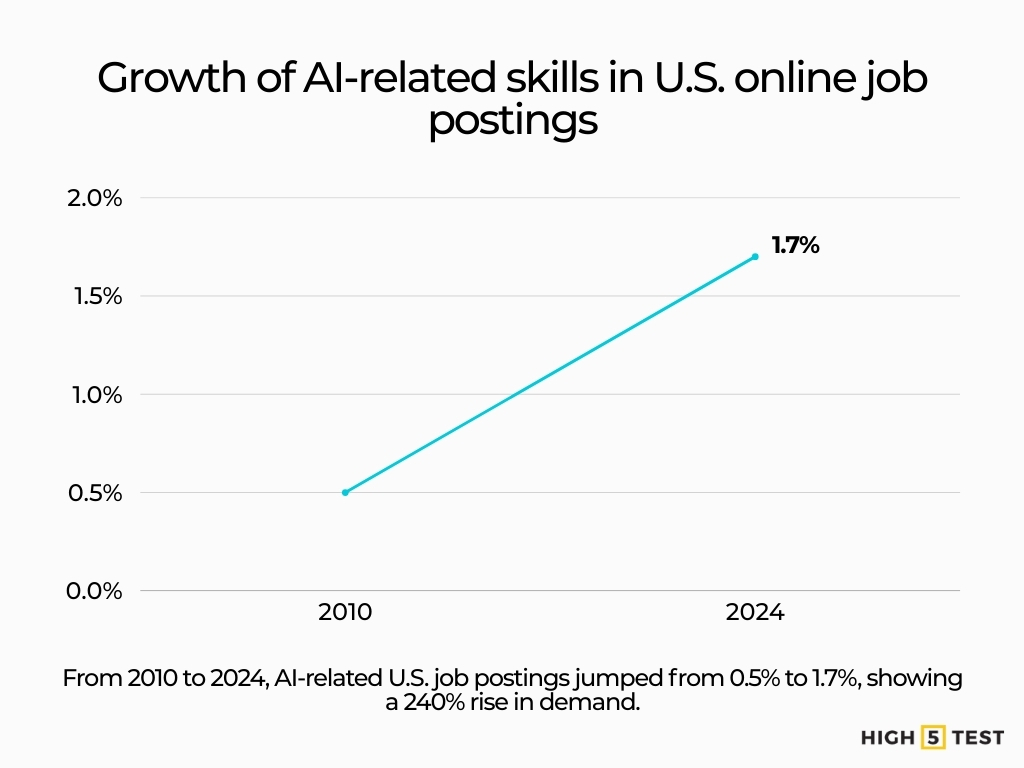
Source: Federal Reserve Bank of Atlanta
Future trends in leadership development
In 2025, more than 72% of managers are actively upskilling, with 51% reskilling, driven by both economic pressures and AI advances.
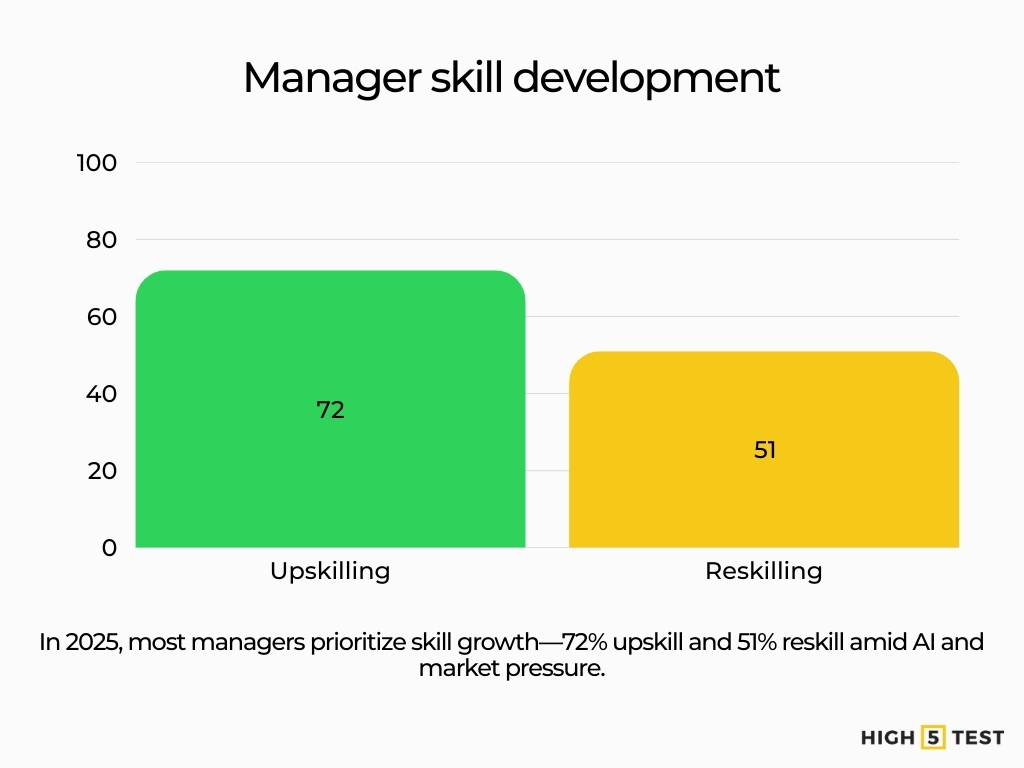
Source: edX
A market forecast underscores that AI is a major force behind growth in long-duration leadership training programs through 2029, contributing to the projected 11.7% CAGR.
Source: Technavio
Year-over-year comparisons of leadership training and development
Corporate training spend in the U.S. fell from US$101.8 billion in 2023 to about US$98 billion in 2024, a drop of ~3.7%, even as external content and service spend grew by 23% in the same period.
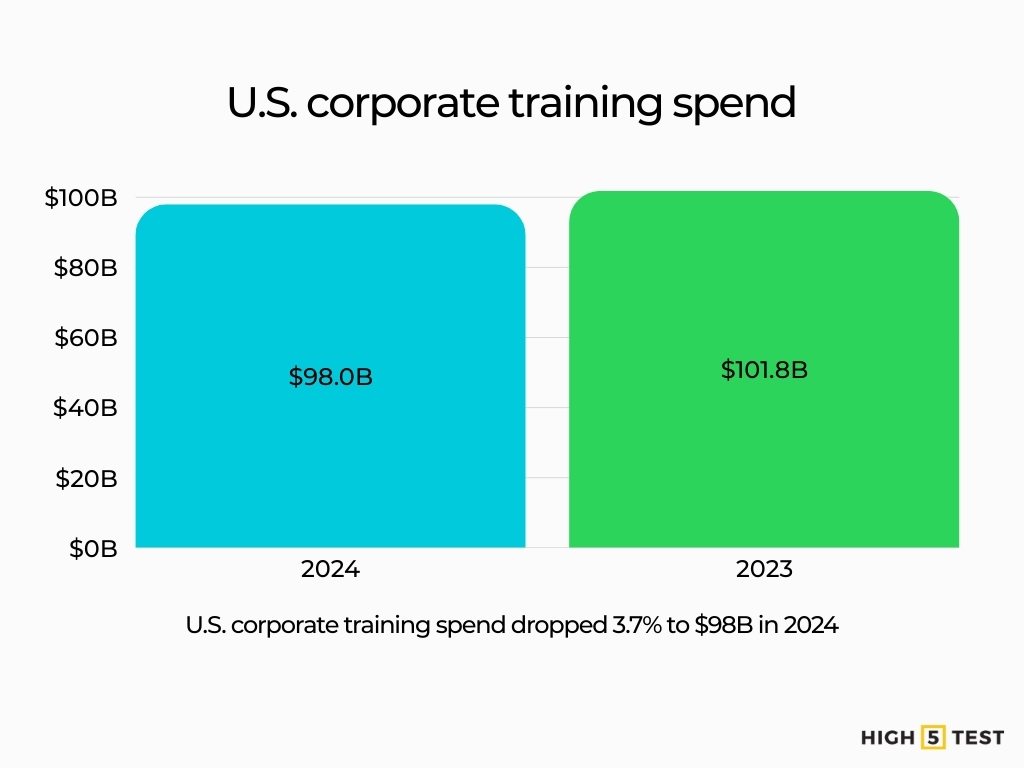
Source: Training Magazine
70% of Gen Zs say they develop skills to advance their careers once a week or more in 2025, up from previous surveys, compared to 59% of Millennials doing the same.
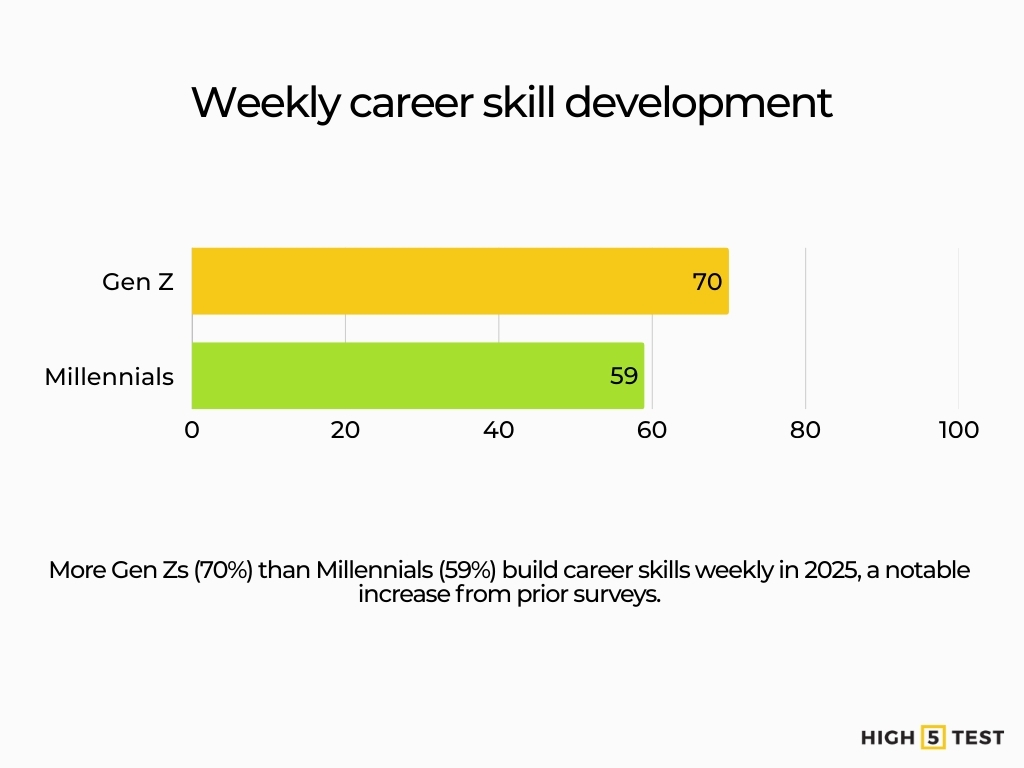
Source: Deloitte
Leadership ROI statistics
A survey of 752 leadership experts shows an average ROI of $7 back for every $1 invested in leadership development.
Source: New Level Work
Organizations that measure leadership development more strategically (linking to bottom-line metrics like turnover, productivity) tend to report significant improvements in retention and revenue (specific client case: reduced salaried turnover by 80%, hourly turnover by 25%) after launching leadership training.
Source: DDI
Leadership training by demographics: Gen Z vs. millennials and views on leadership programs
In 2025, 70% of Gen Zs report developing skills to advance their careers at least once a week, vs 59% of Millennials doing the same.
Source: Deloitte
In a 2025 survey, soft skills (communication, leadership, empathy) are highly valued: 86% of Gen Z and 85% of Millennials believe they are required for career advancement, even more than many technical or GenAI skills.
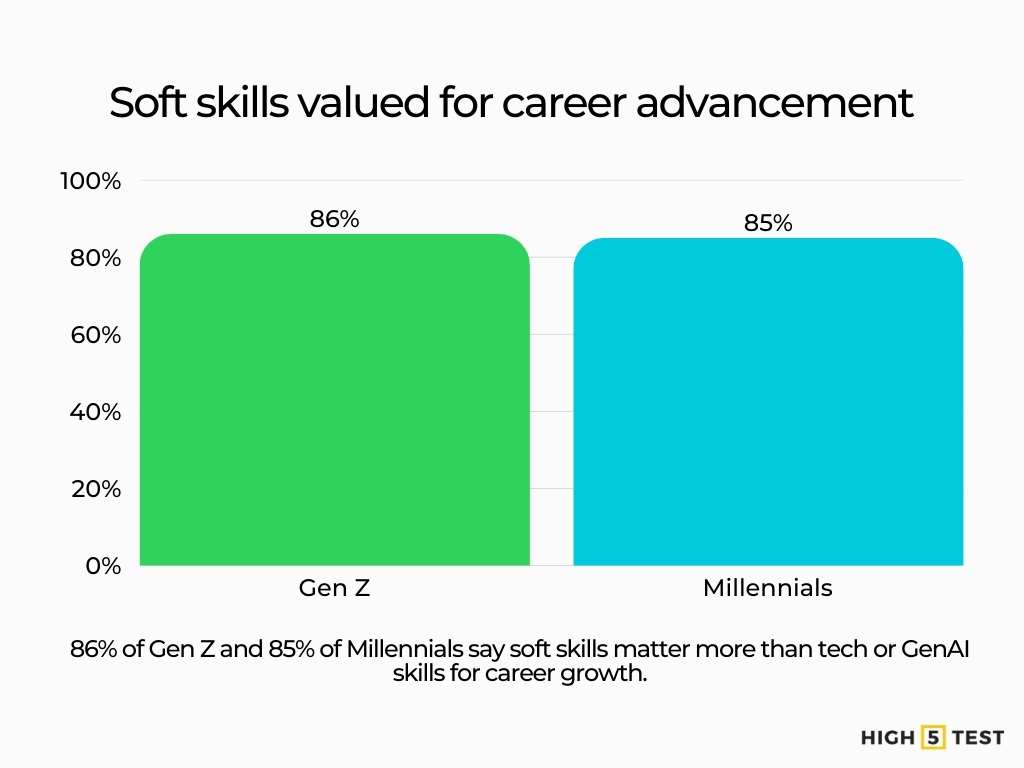
Source: Deloitte
65% of Gen Z respondents say they are highly motivated by professional development, more than Millennials and Gen X in the same study.
Source: Udemy
Data on technology and AI-powered personalized training modules
Both Gen Z and Millennials are widely adopting generative AI in their work; in one survey, 57% of Gen Zs and 56% of Millennials use generative AI in daily work to some extent. As a result, 59% of Gen Z and 62% of Millennials believe these AI skills are somewhat or highly required for their career advancement.
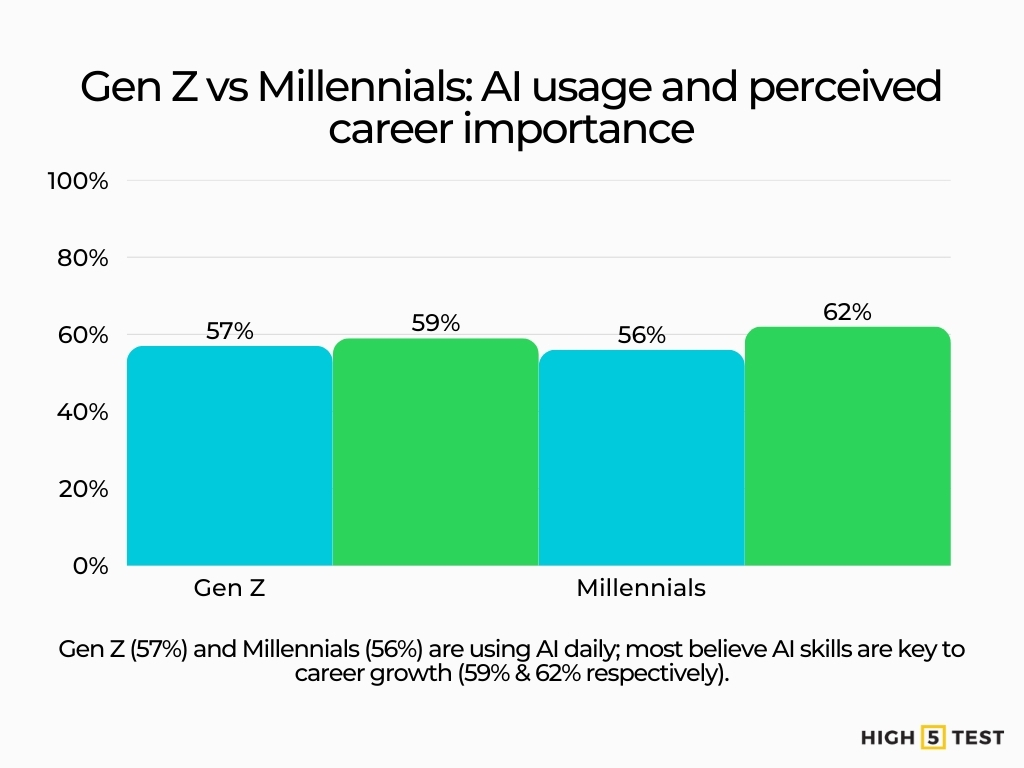
Source: Deloitte
Learning formats: 77% of Gen Z and 78% of Millennials prefer video-based content for upskilling rather than older formats like seminars or slide decks.
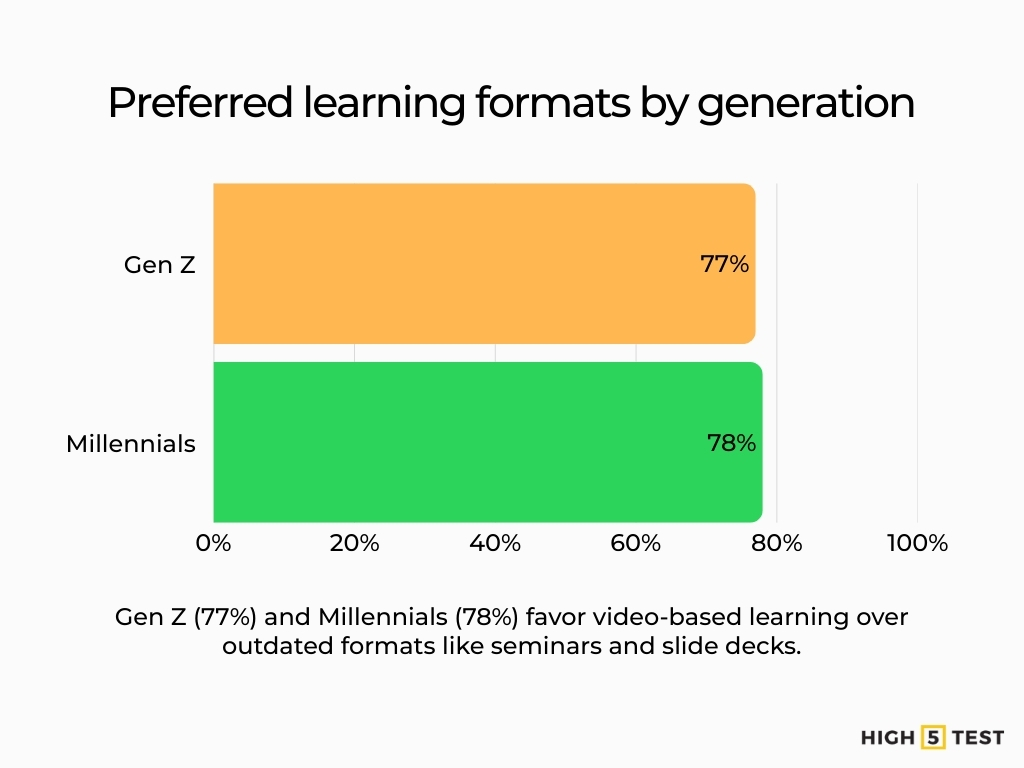
Source: Seismic
Diversity in leadership and DEI-focused outcomes
Women are 12% less likely than men to receive leadership skills training; they are also 15% less likely to be assessed for leadership gaps and internal selection for development opportunities.
Source: DDI
Only 54% of career development programs are tailored to women, down slightly year-over-year. Formal mentorship programs tailored to women also fell from 45% in 2017 to 37% in 2024.
Source: McKinsey & Company
Corporate board diversity: women and minorities represent approximately 44.7% (women) and 7.8% (minorities) of corporate boards of Fortune 500 companies in recent reports.
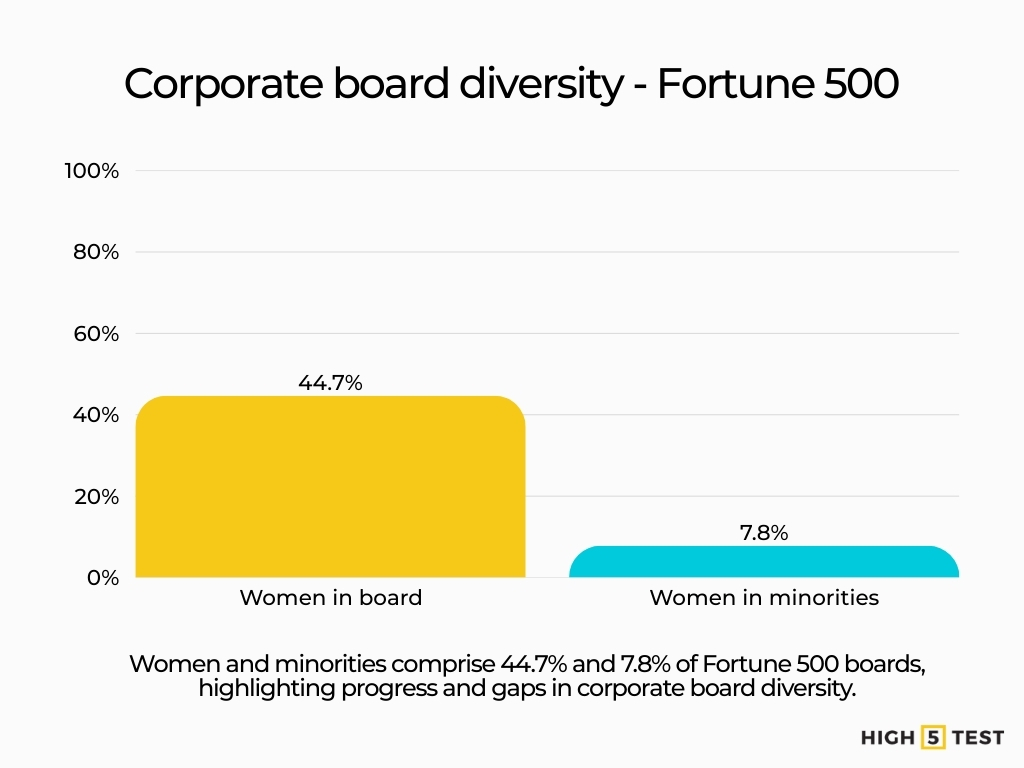
Source: Forbes
The data makes one thing clear – leadership development is no longer optional; it’s a competitive necessity. As organizations move into 2025, those that invest strategically in leadership training programs will see measurable gains in performance, retention, and innovation.
With the rise of AI-powered learning, evolving expectations from Gen Z and Millennial leaders, and a growing emphasis on diversity in leadership, the future of development will be more personalized, data-driven, and inclusive than ever before. For HR professionals and executives, now is the time to reimagine leadership training, not just as a cost center, but as a long-term investment with proven ROI and transformative impact on organizational success.

